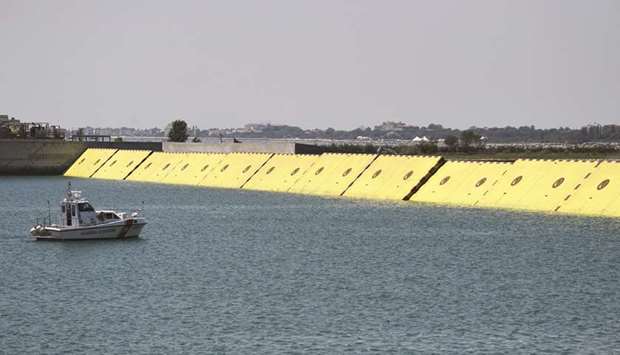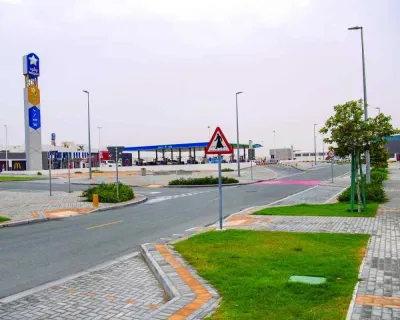Venice’s long awaited flood defence system designed to protect the lagoon city from damaging waters during high tides yesterday survived a first test of its 78 barriers.
The massive infrastructure project known as MOSE, which relies on sluice gates that can be raised to protect the city’s lagoon during high tides, has been underway since 2003, but has been plagued by cost overruns, corruption scandals and delays.
The complex engineering system uses a network of water-filled caissons, designed to be raised within 30 minutes to create a barrier capable of resisting a water rise of 3m (10ft) above normal.
“This is the first test of movement of all four barriers at the same time,” a statement said announcing the successful completion of the test.
Each barrier is made up of around 20 individual gates.
The project has thus far cost about 7bn euros ($8bn), versus an original estimate of 2bn.
Venice regularly experiences “acqua alta”, abnormally high tides that flood shops and hotels as well as the famous St Mark’s Square.
In November, the high waters peaked at 1.87m (6ft), a record not seen since 1966, causing extensive damage to the tourist city.
The project’s head, Elisabetta Spitz, said MOSE will be operational from autumn 2021, although there remains a lot of work and forthcoming tests.
Prime Minister Giuseppe Conte, who came to Venice to assist in the test, said the project had arrived at its “last mile”.
“We must ensure this safeguard will be available for next autumn-winter,” Conte said.
A test in October on part of the barrier caused worrying vibrations and engineers discovered parts had rusted.

Yellow mobile barriers are seen above the surface of the water during tests of flood barrier project Experimental Electromechanical Module (Mose) in Venice yesterday.


